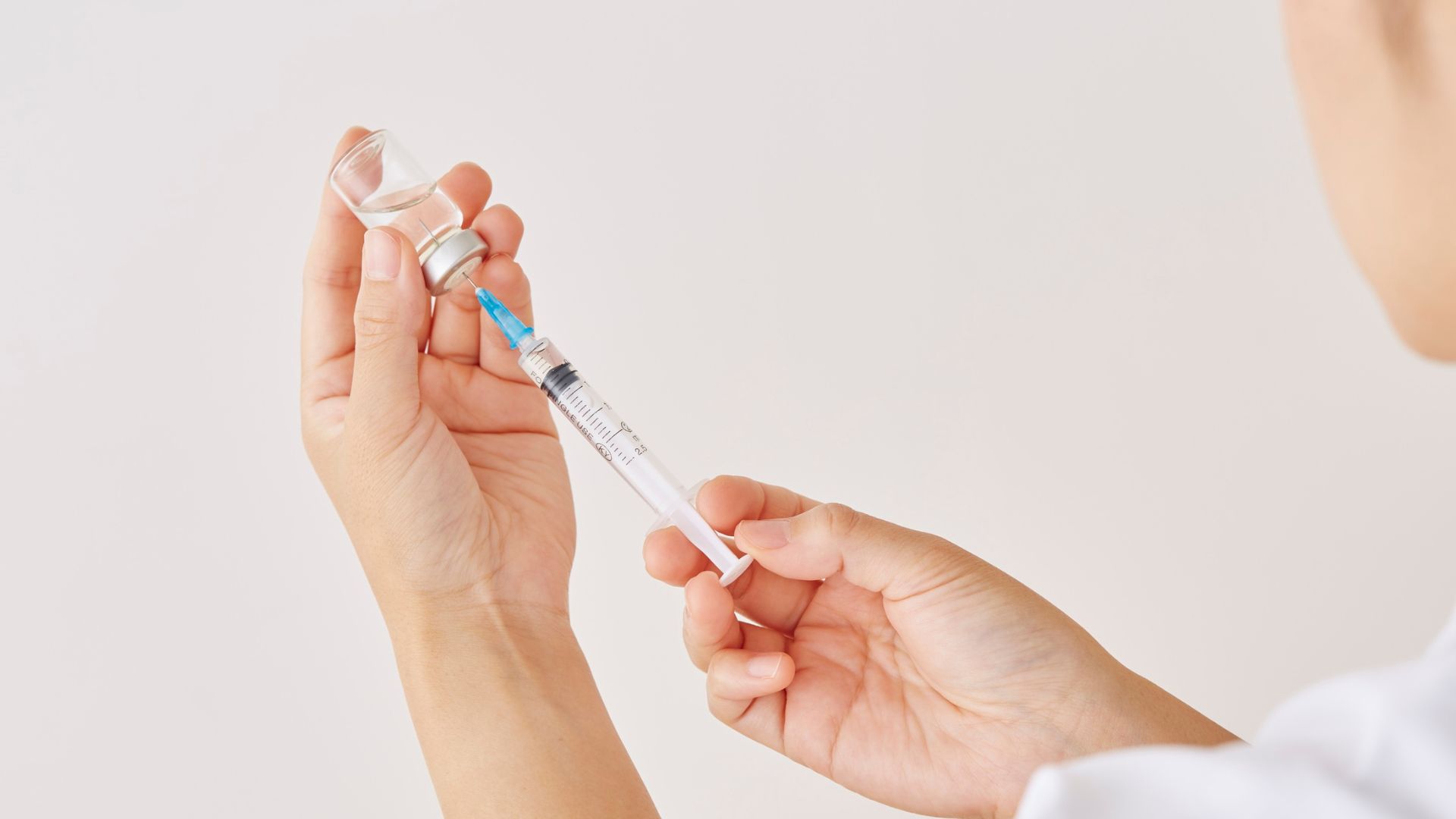Micro needling, known as collagen induction therapy, enhances skin texture and tone by using tiny needles to stimulate collagen production. The procedure typically involves a consultation, a topical anesthetic, and lasts 30-60 minutes. Post-treatment, expect mild redness and sunburn-like sensation, with results improving over several sessions.
Initial Consultation: Understanding Your Skin Goals

Assessing Your Skin Concerns
During the initial consultation, the dermatologist will carefully evaluate your unique skin concerns, such as acne scars, uneven skin tone, stretch marks, and surgical scars. This assessment is crucial for determining how microneedling treatment can best address your specific needs. For those with darker skin tones, microneedling provides a safe and effective option compared to laser treatments, which may sometimes affect the skin's pigmentation.
Personalized Treatment Plan
After the evaluation, you and your dermatologist will discuss a personalized treatment plan. This may include the number of sessions required and the potential benefit of combining microneedling with other treatments like platelet rich plasma (PRP) or chemical peels. A customized approach ensures that each skin concern, whether it be post acne scarring, enlarged pores, or aging skin, is effectively targeted to enhance skin rejuvenation.
Discussing Procedure Details
The consultation will also cover the specifics of the microneedling procedure. Using a microneedling device, tiny holes are created in the skin to stimulate the skin's healing process, promote collagen production, and improve skin elasticity. The procedure is minimally invasive and usually performed at a dermatologist's office. A topical numbing cream is applied to minimize discomfort during the procedure.
Benefits and Expectations
Understanding the benefits and setting realistic expectations is essential. Microneedling therapy is known to treat acne scars, atrophic acne scars, sagging skin, and even promote hair growth. It's important to note that multiple treatments may be needed for optimal results, and improvements become more noticeable as the skin heals over time.
Pre- and Post-Care Instructions
The dermatologist will provide pre- and post-care instructions to ensure the best outcome from your microneedling treatment. Following these guidelines helps to maximize the effectiveness of the treatment and supports the skin's healing process, leading to smoother, more youthful-looking skin. Whether addressing dark spots, cosmetic concerns, or specific skin conditions, microneedling is a versatile and effective cosmetic procedure that can be tailored to your individual needs.
Discussing Skin Concerns with Your Aesthetician

Personalized Skin Analysis with a Board Certified Dermatologist
When discussing skin concerns with your aesthetician, it's important to seek guidance from a board certified dermatologist who can accurately assess your skin. They will evaluate the unique characteristics of your skin type and identify specific issues such as large pores, fine lines, and signs of aging. This thorough analysis ensures a tailored treatment plan aimed at achieving a youthful appearance.
The Benefits of Multiple Microneedling Sessions
For optimal results, multiple microneedling sessions are often recommended. Each session creates microscopic punctures in the skin, triggering the body to respond by producing more collagen. This new collagen helps to improve skin texture, reduce the appearance of atrophic acne scars, and promote a firmer, more youthful complexion.
Exploring Different Microneedling Devices
There are various microneedling devices available, ranging from automated microneedling devices used by experienced dermatologists to at home microneedling kits. While at home microneedling can offer convenience, treatments performed in a clinic by experienced hands ensure precision and effectiveness, particularly for complex skin concerns.
Addressing Hair Loss and Androgenic Alopecia
Microneedling has also gained attention for its potential benefits in treating hair loss, such as androgenic alopecia. By stimulating the scalp with microneedles, the procedure enhances the absorption of treatments and promotes hair growth. Discussing this option with your dermatologist can provide insight into its efficacy for your specific condition.
Understanding the Microneedling Procedure
The microneedling process involves using fine needles to create controlled injuries in the stratum corneum, the outer layer of the skin. Although some may wonder, "Does microneedling hurt?", the application of a topical anesthetic typically minimizes discomfort. The minimally invasive nature of the procedure translates to very little downtime, enabling you to return to your daily activities quickly.
Tailoring Treatment for All Skin Types
One of the advantages of microneedling is its versatility for various skin types and concerns. Whether targeting signs of aging, large pores, or specific conditions like dark spots and acne scars, microneedling can be customized to meet your needs. The key lies in consulting with a knowledgeable dermatologist who can guide you through the process and ensure the best possible outcome.
Maximizing Results with Pre- and Post-Care Instructions
Adhering to pre- and post-care instructions provided by your dermatologist is crucial for maximizing the results of your microneedling treatment. Proper care supports the skin’s healing process, encouraging the production of more collagen and leading to smoother, rejuvenated skin.
Through a careful discussion with your aesthetician and a board certified dermatologist, you can embark on a microneedling journey that addresses your distinct skin concerns and helps you achieve a more youthful, radiant appearance.
Assessing Acne Scars and Uneven Skin Tone

Objective Evaluation of Skin Concerns
A thorough and objective evaluation of acne scars and uneven skin tone by a board certified dermatologist is the cornerstone of devising an effective treatment plan. During this evaluation, the dermatologist will examine the treatment area to determine the severity of the scars and discolorations, ensuring a personalized approach to address your unique skin concerns.
Percutaneous Collagen Induction Therapy
Microneedling, also known as percutaneous collagen induction therapy, is a highly effective cosmetic treatment for reducing the appearance of acne scars and evening out skin tone. By creating micro-injuries in the skin, this therapy stimulates the body’s natural healing process, resulting in increased collagen production and improved skin texture.
Automated vs. DIY Microneedling
While there are various methods to perform microneedling, including DIY microneedling kits, treatments performed with automated microneedling devices by professionals in a doctor’s office typically yield superior results. Automated devices ensure precision and consistency, which are crucial for achieving the same results without causing significant downtime.
Radiofrequency Microneedling for Enhanced Results
Radiofrequency microneedling combines the benefits of traditional skin needling with the added efficacy of radiofrequency energy. This combination further stimulates collagen production and can be especially useful for treating deeper or more stubborn scars, leading to a smoother and more even complexion.
Understanding Needle Lengths and Treatment Areas
The choice of needle lengths during microneedling procedures varies based on the treatment area and the specific skin concerns being addressed. For example, shorter needles may be used for fine lines and uneven skin tone, whereas longer needles are often needed for more substantial scars. Your dermatologist will tailor the needle length to ensure optimal results and minimal discomfort.
Benefits Without Significant Downtime
One of the advantages of microneedling is that it offers impressive results with little to no significant downtime. Most patients can expect to resume their normal activities within a few hours post-treatment, making it a convenient option for those seeking effective cosmetic treatments without lengthy recovery periods.
Microneedling, whether performed alone or combined with other modalities like radiofrequency, provides a versatile and effective solution for assessing acne scars and uneven skin tone. With a focus on stimulating the body's response and enhancing collagen production, this treatment can help achieve smoother, rejuvenated skin.
The Role of Micro Needling in Treating Darker Skin Tones

Understanding Skin Sensitivity and Hyperpigmentation
Darker skin tones may be more prone to sensitivity and hyperpigmentation, which makes choosing appropriate cosmetic treatments essential. Microneedling addresses this concern by being a minimally invasive option, as it promotes the body's natural healing response without causing significant damage to the skin's surface. This makes it particularly effective for individuals with darker skin tones who wish to treat scars, uneven skin tone, or other scars.
How the Body Responds to Microneedling
When an automated microneedling device creates controlled micro-injuries on the skin's surface, the body responds by generating new collagen and elastin fibers. This controlled response helps to rejuvenate the skin from within, improving texture and tone while minimizing the risk of hyperpigmentation. The production of new collagen can be particularly beneficial for treating various skin conditions, including acne scars and other scars, leading to a smoother, more even complexion.
Customized Treatment Plans for Darker Skin
A key aspect of successfully using microneedling for darker skin tones involves customizing the treatment plan to suit individual skin sensitivity and needs. Dermatologists may opt for different needle lengths or perform fewer passes over the skin to reduce the risk of hyperpigmentation and ensure a gentler procedure. Ensuring that the treatment plan is tailored is crucial for achieving optimal results with minimal side effects.
Safety and Efficacy of Automated Microneedling Devices
Automated microneedling devices offer enhanced precision and control, which is vital for treating darker skin tones safely. These devices ensure that the needles penetrate the skin at a consistent depth and angle, reducing the likelihood of excessive trauma or irritation. The consistency provided by automated devices can enhance the procedure's overall efficacy, resulting in better outcomes for those with darker skin tones.
Post-Treatment Care for Darker Skin
Proper post-treatment care is essential for maximizing the benefits of microneedling and reducing the risk of adverse effects such as hyperpigmentation. Following prescribed skincare regimens, avoiding sun exposure, and using suitable moisturizing products are critical steps. By adhering to these guidelines, individuals with darker skin tones can achieve rejuvenated, smoother skin without significant downtime or complications.
Microneedling presents a versatile and effective option for treating darker skin tones, addressing specific skin concerns such as acne scars and other scars while promoting a more even skin tone. The precision offered by automated microneedling devices ensures that the procedure remains safe and highly effective, helping to achieve smoother, rejuvenated skin.
Preparing for Collagen Induction Therapy

Consultation with a Dermatologist
Before undergoing collagen induction therapy, it is essential to have a thorough consultation with a dermatologist. During this consultation, the dermatologist will assess your skin type, identify specific skin concerns, and discuss your treatment goals. This initial evaluation ensures that collagen induction therapy is suitable for you and helps to tailor the treatment plan to your unique needs.
Pre-Treatment Skincare Regimen
Adopting a pre-treatment skincare regimen can enhance the effectiveness of collagen induction therapy. Your dermatologist may recommend specific products or routines to prepare your skin. This may include using gentle cleansers, moisturizers, and serums that promote skin health. Avoiding the use of harsh exfoliants or products containing retinoids may also be advised to prevent skin irritation before treatment.
Avoiding Sun Exposure
Minimizing sun exposure is critical in the weeks leading up to your collagen induction therapy session. Exposure to UV rays can make the skin more sensitive and increase the risk of complications during and after the treatment. It’s recommended to use a broad-spectrum sunscreen with an SPF of at least 30 daily and avoid tanning beds or prolonged sun exposure.
Hydration and Nutrition
Maintaining good hydration and nutrition can support the body's natural healing processes, which are integral to the success of collagen induction therapy. Staying hydrated ensures that your skin is well-moisturized and supple, which can help in achieving optimal treatment results. Consuming a balanced diet rich in vitamins and minerals, particularly those that support skin health like vitamin C and zinc, can also benefit your skin's repair mechanisms.
Avoiding Certain Medications and Treatments
In the days leading up to your appointment, you may need to avoid certain medications and treatments that can increase the risk of bruising or bleeding during collagen induction therapy. This includes blood-thinning medications, non-steroidal anti-inflammatory drugs (NSAIDs), and some herbal supplements. Your dermatologist will provide a list of substances to avoid to ensure the procedure proceeds smoothly.
Mental and Physical Preparation
Preparing mentally and physically for the procedure can also play a role in its success. Understanding what to expect during and after collagen induction therapy can help alleviate any anxiety or concerns you may have. Ensuring you are well-rested and stress-free on the day of the treatment can further contribute to a positive experience and outcome.
By following these preparatory steps, you can optimize your collagen induction therapy results, ensuring your skin is well-prepared to undergo the treatment and heal effectively.
Applying a Topical Anesthetic: What to Expect

Purpose of Topical Anesthetics
Topical anesthetics are applied to the skin before collagen induction therapy to numb the treatment area and minimize any discomfort during the procedure. These anesthetic creams or gels work by temporarily blocking the nerve signals in your skin, making the process more comfortable and less anxiety-inducing.
Application Process
The application process is straightforward and typically conducted by your dermatologist or skincare professional. The following steps outline what you can expect:
- Cleansing the Skin: Before applying the anesthetic, the treatment area will be thoroughly cleaned to remove any dirt, oils, or makeup. This step ensures that the anesthetic is effectively absorbed and that the skin is prepped for treatment.
- Application of Anesthetic: The topical anesthetic is applied generously to the area needing treatment. It is often spread in a thick layer to ensure full coverage.
- Waiting Period: After applying the anesthetic, a waiting period of 20 to 30 minutes is usually required. This allows the anesthetic to penetrate the skin fully and take effect.
Sensation and Effect
During the application, you may feel a mild tingling or cooling sensation as the anesthetic begins to work. Once the waiting period is over and the anesthetic is fully effective, the treatment area will feel numb, significantly reducing any sensation of pain or discomfort during the procedure.
Post-Application Steps
After the topical anesthetic has taken effect, the dermatologist will remove any excess product, ensuring the skin is clean and ready for collagen induction therapy. This removal process may involve gently wiping the area with a sterile cloth or gauze.
Considerations and Precautions
It’s important to inform your dermatologist of any allergies or previous adverse reactions to anesthetics before the application. Additionally, follow any specific instructions provided by your skincare professional to ensure the best possible outcome and comfort during your treatment.
The Sensation of Micro Needling: Is It Painful?

Micro needling, also known as collagen induction therapy, involves the use of a device equipped with fine needles to create micro-injuries on the skin's surface. These controlled micro-injuries stimulate the body's natural healing processes, leading to increased collagen production and overall skin rejuvenation.
Pain Threshold and Individual Variation
The sensation experienced during micro needling can vary greatly from person to person, largely depending on individual pain thresholds and the intensity of the treatment. Some people report only a slight tingling or pricking sensation, while others may experience more noticeable discomfort. The depth of the needles and the area being treated also play roles in determining the level of pain experienced.
Role of Topical Anesthetics
As previously mentioned, applying a topical anesthetic can significantly mitigate any discomfort associated with micro needling. When the skin is adequately numbed, the procedure becomes much more tolerable, often described as feeling like a mild vibration or light pressure on the skin.
Sensations During the Procedure
During the actual micro needling session, you may initially feel a slight pricking sensation as the needles make contact with your skin. This sensation generally diminishes as the procedure continues, thanks to the numbing effect of the topical anesthetic. Some areas of the face or body are more sensitive than others, such as the forehead and around the eyes, potentially resulting in heightened sensations in these regions.
Post-Treatment Sensation
After the procedure, your skin may feel warm, tight, or slightly sunburned. This post-treatment sensation typically fades within a few hours to a couple of days, depending on your skin type and the specific treatment parameters used. Any potential discomfort can be alleviated with soothing products and proper aftercare as recommended by your dermatologist.
Managing Discomfort and Enhancing Comfort
To enhance your comfort during and after micro needling, follow these tips:
- Communicate with your Provider: Always inform your dermatologist about your pain tolerance and any concerns you may have before starting the procedure.
- Follow Pre-Treatment Advice: Adhering to pre-treatment instructions, such as avoiding certain medications, can help reduce the risk of increased sensitivity.
- Use Recommended Products: Post-treatment skincare products can soothe any immediate discomfort and promote quicker recovery.
By understanding what to expect and following professional guidance, most individuals find micro needling to be a manageable and worthwhile procedure, leading to healthier, more vibrant skin.
Ready to Revitalize Your Skin? Contact Oceanside Medical Today!

If you're ready to experience the benefits of collagen induction therapy and achieve healthier, more vibrant skin, don't wait any longer. At Oceanside Medical, our team of experienced dermatologists and skincare professionals is dedicated to providing the highest quality of care. Contact us today to schedule your consultation and take the first step towards rejuvenated skin.
Your journey to radiant skin starts here. Trust Oceanside Medical to help you look and feel your best.














